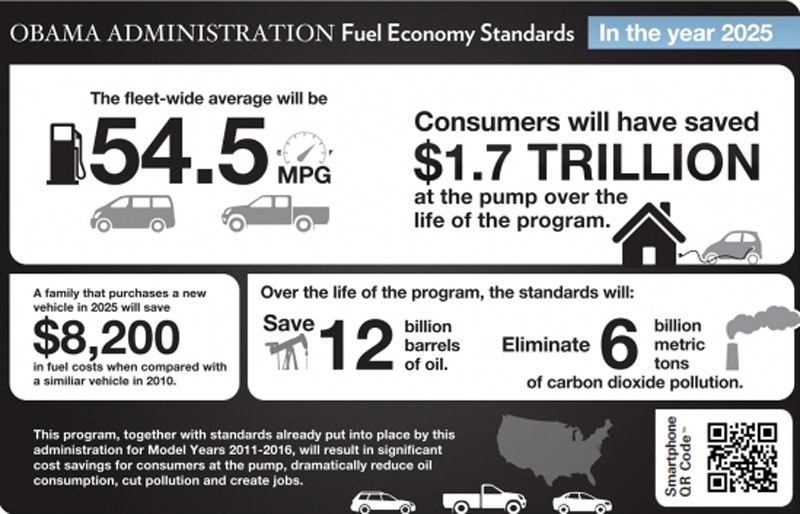On Tuesday this week, U.S. Transportation Secretary Ray La Hood and EPA Administrator Lisa Jackson announced new gas mileage targets that will require the average fuel economy of all new cars and light-duty trucks sold in the U.S. to reach 54.5 mpg by 2025.
We’ve already covered what the new 2025 CAFE standards will mean for you as a driver. Now it’s time to examine the positive effect the ruling will have on two automakers in particular, Honda and Tesla Motors.
Checks and balances
Under the new regulations, due to come into force for all new cars made between 2017 and 2025, automakers will be awarded credit for every new car they sell which meets the new EPA gas mileage standard.
Automakers will then be able to use the credits earned from selling a car that meets the requirements to compensate for sales of cars which do not meet the requirements.
54.5 MPG CAFE standard for 2025
In essence, it doesn’t matter how many low gas mileage, high emission cars are sold by an automaker under the new regulations, provided they sell enough high-gas mileage, low-emission cars that exceed the target to compensate.
Extra credits
Buried somewhere in the 1,230 page document finalizing the new standards however, is a new rule which rewards automakers for making green cars in a similar way to the zero-emissions credit scheme already in place in California.
Essentially, automakers will earn extra credits for every zero or ultra-low emissions car they sell, something the EPA is terming an “Incentive multiplier.”
For Honda, initially an opponent of the new rules, that means every Civic Natural Gas car it sells will carry extra weighting in its corporate average fuel economy figures.
In essence, by making and selling the Civic Natural Gas, Honda has to work less to improve the gas mileage of the rest of its fleet.
Honda won’t be the only automaker to benefit either.
According to the regulations, plug-in hybrids, all-electric and hydrogen fuel cell cars will also earn automakers extra credits.
Starting with 2017 model year cars, every plug-in hybrid sold will earn its automaker 1.6 times the usual credits, gradually phasing down to 1.3 times credit by 2021. All-electric and hydrogen fuel cell cars will earn their automakers 2.0 times the usual credits for 2017 model year cars, dropping to 1.5 times by 2021, when the EPA will end the use of multipliers.
money
Clean credit marketplace?
For automakers like Nissan, Toyota, Ford and General Motors, who make a combination of traditional gasoline and advanced technology vehicles, the credits will function much in the same way as they do for Honda’s Natural Gas car credits, balancing out gas mileages and emissions of less-efficient cars with those of the most efficient models.
For automakers like Tesla, however, the new EPA scheme will provide an additional income.
Why?
Under the scheme, Tesla will earn double credits for every zero-emission car it makes for the 2017 model year, ramping gradually down to 1.5 times the credit by model year 2021.
Since every car it makes is electric, Tesla won’t need to keep any of those extra credits to balance out less efficient models.
As it has already done numerous times with California’s own Zero-Emissions credit scheme, Tesla will be free to sell its excess credits to the highest bidder.
Is it fair?
While the additional credits given to low and zero emissions cars will undoubtedly encourage automakers to make more efficient cars as a whole, does the selling of credits mean that some automakers will choose to buy their way out of trouble if they don’t meet targets?
And while this practice isn't new, is it fair?
Let us know your thoughts in the Comments below.
+++++++++++













